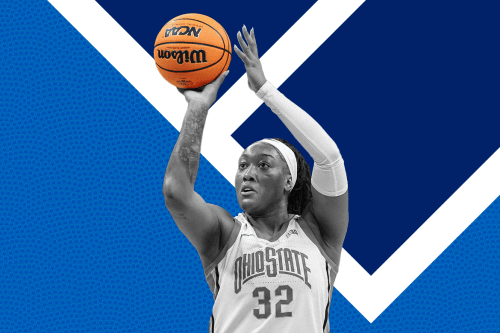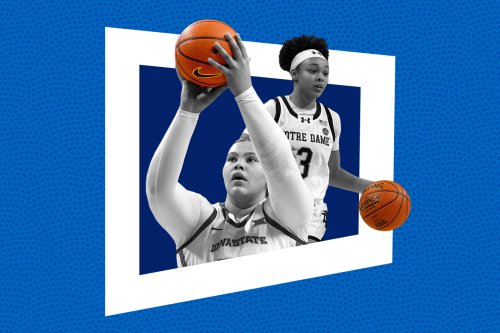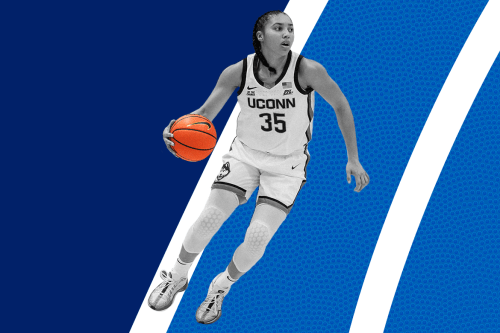Our editors independently select these products. Making a purchase through our links may earn Well+Good a commission
This Is Exactly How a Sports Bra Should Fit, According to 2 Sports Bra Designers
Sports bra designers explain what to look for in the cup size, band size, and straps to get the perfect sports bra fit.
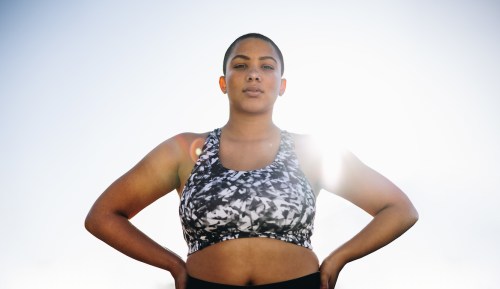
“Finding the right sports bra is all about finding the right balance of comfort and support for your breast size, breast density, body type, and intended activities,” says Tara Sweeney, senior bra technical designer at Nike. Ideally, you want a bra that is aesthetically pleasing but also supports how you train, supports your breast tissue, and doesn’t irritate your skin. To help you find the best sports bra to get you through your next workout, no matter what it is, we tapped the pros to find out how a sports bra should fit so you feel supported from Downward-Facing Dog to box jumps to sprints.
Experts in This Article
Julianne Ruckman is Brooks’ senior product line manager.
Tara Sweeney is a senior technical bra designer at Nike.
How to find a sports bra that fits
Step 1: Check the fit of the bottom band
First and foremost, find the perfect fit underneath the bust, around the bottom band. “The bottom band is the foundation of any bra, so it should fit snuggly on the rib cage, directly below the bottom of the breast tissue,” says Sweeney. A general guideline is that: “If you can put more than two fingers underneath the bottom band and pull it away from your body, and you feel like you’ve got a good amount of stretch and space, most likely that bottom band is too big for you,” says Julianne Ruckman, Brooks’ senior product line manager.
You’ll also want to apply the two-finger rule on the sides and by your underarms. You want to be able to slide two fingers underneath the band, but you don’t want to have extra space or gapping, Ruckman says. “Eighty percent of your support is going to come from that bottom band,” says Ruckman, so you want to make sure it fits properly. If you feel like you have more than two-fingers worth of space and you can stretch the band away from your body, “you probably want to size down,” Ruckman advises.
“Figuring out and perfecting that bottom band is always going to be the first step on giving you the most supportive experience, and it also prevents chafing,” she adds. If the bottom band is too loose, it will move on your body while you’re in motion, so, “you want something to hug the body and hold it really nice for support, and also prevention of any other distractions,” says Ruckman.
Step 2: Find the right cup size
Now that your band fits properly, it’s time to focus on finding the right cup size. The cup is “another part of the style that you absolutely need to ensure that you’re getting the coverage you want out of the volume of your breast tissue,” says Ruckman. “The cups in your sports bra should fully contain your breast tissue and fit snuggly against your breasts without cutting at the neckline and/or the underarm,” Sweeney adds. Additionally, you shouldn’t experience any extra room in the bottom of the cup or apex or stand away at the neckline or underarm.
Gold Medal Couple Tara Davis-Woodhall and Hunter Woodhall Talk Marriage, Motivation, and Their Next Chapter With Nike

Coach Kara Lawson Wants You to ‘Handle Hard Better’—and Here Are 3 Ways to Do Just That

JuJu Watkins Leaves March Madness With ACL Tear—and This Knee Injury Is More Common Than You Think
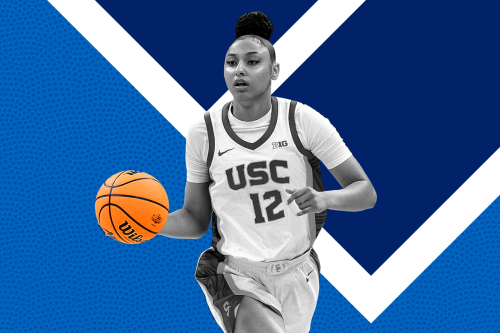
Alpha-size styles—small, medium, large, extra-large, etc.—make finding the right cup trickier because “different brands build for different cup sizes within those slots,” according to Ruckman. She recommends starting with a sports bra that has removable cups if it’s an alpha-size style, “because you can always remove that cup, and you can get or create more space or volume if you need it.”
If you feel like the bottom band fits well but you need more space for the cup, Ruckman advises against going up in size because you’ll lose the tension and support the bottom band provides. “So, unfortunately, if you figure out the bottom band and the cup is feeling off, it’s probably not the style for you that’s going to give you the most supportive experience,” says Ruckman.
If you opt for a style that has a band and cup size, you have more leeway when it comes to the fit. For example, if you’re a 34B but the band feels too loose, you can go down in band size and up in your cup size, Ruckman says. This won’t make the cup bigger because they’re sister sizes, and the C cup in a 32 bra is identical to the B cup in a 34 bra, Ruckman explains.
If your bra has a cup and band size, it’s recommended you do the “scoop and lift” technique to make sure all your breast tissue is in the cup. This will also allow you to check the top volume, ensuring that the breast tissue doesn’t spill out over the top or on the sides, says Ruckman. “Be careful not to mistake cups being too small for compression and control—even compression bras should still fully contain your tissue for proper fit and support,” says Sweeney.
Step 3: Check your straps
An often overlooked step to making sure your sports bra fits properly is checking the fit of the straps. The straps “complete the perfect fit,” and you want to make sure they aren’t too tight and don’t dig into your neck, says Ruckman. “The straps are critical in creating a balanced fit. They help provide needed tension on the neckline and underarm to help distribute the breast weight and alleviate pressure on the bottom band,” Sweeney adds.
If the straps are adjustable, make sure you get them to a firm but comfortable spot on the body so they fit your torso. You shouldn’t tighten your straps to compensate for other fit issues such as the cup being too big or the bottom band being too loose, according to Sweeney. If you experience either of these, you should try a different bra style. “A lot of women think that they’re gaining support by tightening their straps. They might feel more compression, but really, that support is coming from the bottom band and the shell itself, and the strap is all about just perfecting fit,” says Sweeney.
Finding a sports bra style that’s best for you
Sweeney suggests taking your time and trying on as many styles and fits as possible to find what works best for you. She also advises asking yourself what will make you the most comfortable in your activity. For runners, Brooks released the Drive Collection, offering a variety of sports bra styles from light compression to high-impact support.
To reduce pressure on your shoulders, a bra with thick straps like the Nike Bold High-Support Bra ($75) is a good option. For compression, Sweeney recommends the new Nike Swoosh Longline Bra ($40). If you prefer breast separation and modesty, Sweeney says a padded encapsulation style, like the Nike Alpha Bra ($55) is a good fit. Sports bras aren’t one-size-fits-all, but following the above advice will help you find a fit that supports you throughout your workout journey.
Oh hi! You look like someone who loves free workouts, discounts for cult-fave wellness brands, and exclusive Well+Good content. Sign up for Well+, our online community of wellness insiders, and unlock your rewards instantly.
Sign Up for Our Daily Newsletter
Get all the latest in wellness, trends, food, fitness, beauty, and more delivered right to your inbox.
Got it, you've been added to our email list.
